#robert stigwood
Text
Can we talk about Epstein and Robert Stigwood?
I’ve not seen this discussed in the fandom before but I would like answers.
Here’s a few things that make me wonder:
On Friday, August 25, Robin [Gibb] was visiting secretary Molly Hullis (later to become his wife) in the NEMS office when Brian Epstein arrived in tears and entered Stigwood's office. "He closed the door and there was a lot of shouting. When he came out he was still crying. I said, What's the matter? He said, 'I can't talk.' And he went straight out. Moments later, Stigwood told Robin The Bee Gees would be departing for Monte Carlo that night. "Brian had pleaded with Robert to go to Sussex with him that weekend because he didn't want to be alone," says Robin."The Beatles were in Bangor with the Maharishi. And Robert had said no."
Word reached Stigwood and The Bee Gees in Monte Carlo on Sunday that Epstein had died. "It was awful," remembers Robin. "We had this terrible midnight cruise to Nice so Robert could catch a plane back. He had nothing to do with Brian's death, but he felt tremendously guilty, because if he'd stayed that might not have happened."
Source: x
We also know that Robert Stigwood was a closeted gay man, who was working with Brian but it was to everyone’s surprise and the Beatles certainly didn’t take a liking to Robert.
The British entertainment establishment was shocked on January 13, 1967 when Brian Epstein merged his entertainment management company, NEMS Enterprises, with Robert Stigwood’s company. People are still uncertain as to why Epstein made this move. He obviously wanted to reduce his involvement in NEMS Enterprises, but this merger was considered a bold move.
Stigwood agreed to transfer all of his company’s assets into NEMS. As a result, he received major shareholding in NEMS, in addition to a handsome salary and many other perks as could only be expected.
The four Beatles were absolutely livid. They definitely has no fondness for Stigwood. In 2000, Paul told interviewer Greil Marcus:
“We said, ‘In fact, if you do, if you somehow manage to pull this off, we can promise you one thing. We will record ‘God Save The Queen’ for every single record we make from now on and we’ll sing out of tune. That’s a promise. So if this guy buys us, that’s what he’s buying.”
Source: x
It does make me wonder: Brian was always very protective of the Beatles and who was around them, working with them. So where did this decision come from? Robert was going to hve slightly over 50% of the NEMS shares, if NEMS didn’t go to Clive Epstein after Brian’s death.
And the quote above that with a crying Brian running into Robert’s office, shouting and then leaving again, still crying just doesn’t fit in that well with the composed business man Brian came across as.
So here’s what I’m wondering: Was there more to their relationship than business partners? Did Robert turn down Brian’s advances in that office? Was this just another rejection on top of the Beatles leaving him behind to go to India? Was this moment a moment that made Brian spiral even further into his depression?
I have so many questions, but no one has any answers, it seems.
74 notes
·
View notes
Photo

Billboard (October 23, 1971)
36 notes
·
View notes
Text

Bee Gees - To Love Somebody (1967)
Barry Gibb / Robin Gibb
from:
"To Love Somebody" / "Close Another Door" (Single)
"Bee Gees' 1st" (LP)
"Their Greatest Hits: The Record"
(2001 Compilation | Disc 1)
Orchestral Pop | Blue-Eyed Soul
JukeHostUK
(left click = play)
(320kbps)
Personnel:
Barry Gibb: Lead and Backing Vocals / Rhythm Guitar
Robin Gibb: Harmony and Backing Vocals
Vince Melouney: Lead Guitar
Maurice Gibb: Bass Guitar / Backing Vocals
Colin Petersen: Drums
Orchestral Arrangement by Bill Shepherd
Produced by Robert Stigwood / Ossie Byrne
Recorded:
@ The IBC Studios
in London, England UK
April, 1967
Single Released:
in mid-June, 1967(UK)
July, 1967 (US)
Album Released:
on July 14, 1967 (UK)
on August 9, 1967 (US)
Polydor Records (UK)
ATCO Records (US)
Spin Records (Australia)
RSO Records:
(1978 Reissue)
Reprise Records:
(2006 CD Reissue)
♪♪♪ ♪♪♪ ♪♪♪
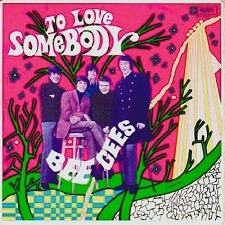
To Love Somebody (Song)
https://en.wikipedia.org/wiki/To_Love_Somebody_(song)
#To Love Somebody#The Bee Gees#1960's#Bee Gees#Robin Gibb#Barry Gibb#Robert Stigwood#Orchestral Pop#Blue-Eyed Soul#ATCO Records#Polydor Records
6 notes
·
View notes
Text
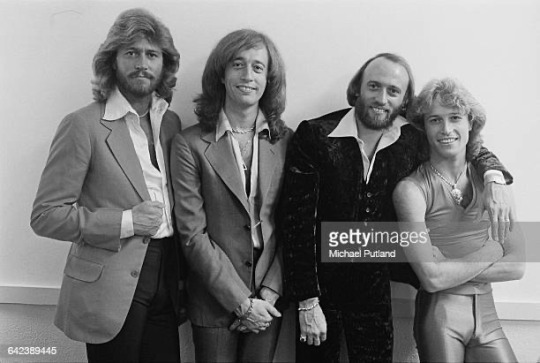
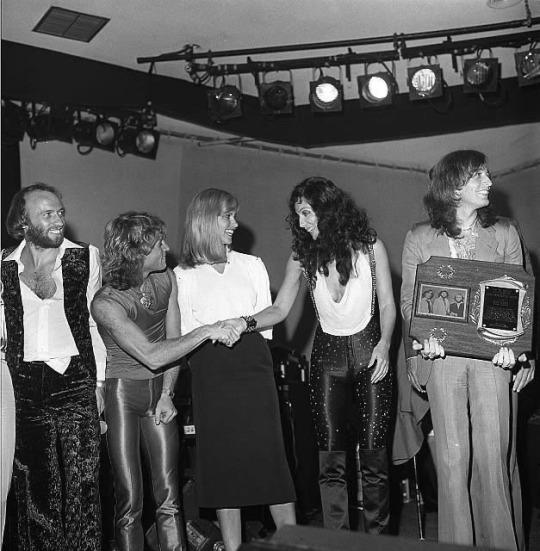

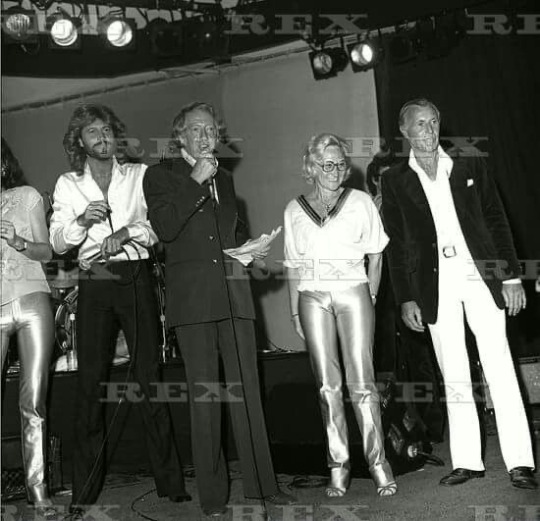
This is going to be a multi post today because I have a bunch of photos and can’t fit them in one post.
I’m fascinated by the NARM convention in 1979 held in Miami. (National Association of Recording Merchandisers) Cher and Gene Simmons hosted it and were a couple at the time. 🤯
All 4 Gibb brothers were in attendance and performed as well as having Yvonne, Linda, and their Mom and Dad on stage!
#barry gibb#robin gibb#maurice gibb#andy gibb#yvonne gibb#linda gibb#robert stigwood#cher#olivia newton john#NARM#1979#the brothers gibb#beegees#bee gees#the bee gees#suzi quatro
21 notes
·
View notes
Text
Allen Klein was not the only person who fancied himself as the new Beatles’ manager: Robert Stigwood sought a meeting with them. Whether or not he had by then secured the funds necessary to acquire the controlling interest in NEMS Enterprises, the necessary financing would clearly not be difficult if he could show that he was to be, through NEMS, the Beatles’ personal manager, as Brian Epstein had been. The boys consented to attend a meeting, not least I supposed as they were concerned as to their future legal status vis-à-vis the company during the remaining period, albeit short, of their management contract with NEMS. Also, it was clear that they retained some respect for Clive and the Epstein family.
The meeting convened in Brian’s old private office at Hille House, Stafford Street. As well as the Beatles, there were present Robert Stigwood, his partner David Shaw, Clive Epstein and myself. Stigwood did most of the talking, laying out the advantages his management would bring and dwelling at some length on his current success with the Bee Gees, Cream and other acts. He also emphasized his respect for the Beatles’ work and their worldwide success, and undertook to carry on Brian’s work to the best of his ability.
The reaction was short and not sweet. The Beatles made it clear, reasonably politely, that they wanted no part of him. The principal spokesman was Paul McCartney. He said that no one could replace Brian and that in any event they intended at that time to manage themselves. Stigwood responded that in that case he would not seek to exercise his option to purchase the fifty-one percent of NEMS and that he and the other members of his organization would leave forthwith. The meeting had been brief and I don’t recall Clive, David Shaw, myself or the other three Beatles saying anything at all. There was no hanging about for cups of coffee and chat afterwards, but as the Beatles were leaving John Lennon said to me “That’ll please Geoffrey, won’t it!” I suppose my distaste for the whole Stigwood episode had become well known. While I was glad of John’s goodwill I felt at the same time that there were likely to be increasing difficulties with the Beatles in the months to come. In this I was not mistaken.
[—from I Should Have Known Better: A Life in Pop Management, Geoffrey Ellis]
#i should have known better: a life in pop management#geoffrey ellis#the beatles#robert stigwood#NEMS#1967#paul mccartney#john lennon
15 notes
·
View notes
Text



The Bee Gees at the UN Lobby / Studio 54 and Robin at the big Apple with Robert Stigwood, Tina Turner, and Parker Stevenson, in May / July 1978.
Photos by New York Post Archive. Credit the source if reposting.
#the bee gees#bee gees#barry gibb#robin gibb#maurice gibb#tina turner#parker stevenson#robert stigwood#bw#upload#New York Post Archive#NOT FOR COMMERCIAL USE
4 notes
·
View notes
Text
NARM Convention Miami, Florida - 1979
~Brenda




#the bee gees#andy gibb#narm convention#1979#barry gibb#robin gibb#maurice gibb#robert stigwood#music#vintage
6 notes
·
View notes
Text
# 4,090
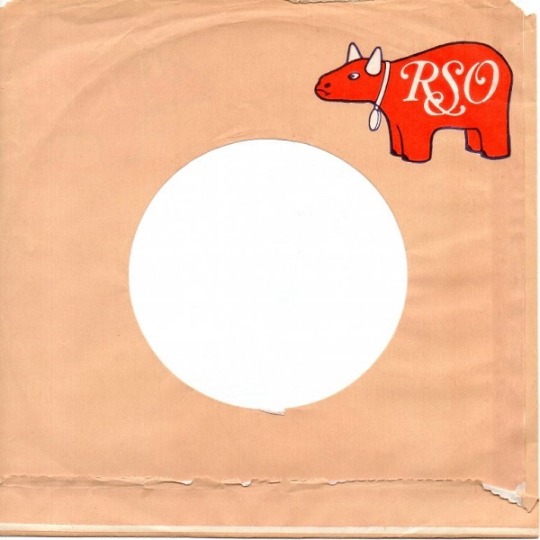
RSO label red ‘akabeko’ 7″ paper sleeve (1973-1979)
The Robert Stigwood Organisation, owned by himself and Al Coury, managed some of the greatest acts in pop music history (rock and disco) and released many of the most successful movie soundtracks ever (Star Wars, Saturday Night Fever, Fame, Grease). They’ve accomplished plenty of Billboard chart records and made an amazing mint thanks to their releases.
“But what about that cow?” you ask. Well, you’re not wrong. Heck, you’d also be right if you called it a bull. It’s an akabeko, which is Japanese for ‘red bull’. Stigwood was in Japan with The Bee Gees when he decided to erect his own label. After being unhappy with many potential logos, his Japanese friends gifted him an akabeko, which was a paper-mache cow, and that became the logo. Don’t worry, folks. It’s harmless and has no potential of goring people, unlike how The Bee Gees gored the label for $200,000,000 after being stiffed of mismanagement.
#RSO#vinyl#records#cows#bulls#red#omega#music#mixtapes#reviews#playlists#Robert Stigwood#Al Coury#Bee Gees#disco#rock
0 notes
Text
KAMAD Throwback Thursdays 1975: Tommy
Throwback Thursday #TBT
Throwback Thursday on the KAMAD site will be a regular occurrence in the next year. As a motivational project, to make sure I am working on something, even in a week where I don’t see a new film in a theater, I am going to post on movies from 1975. Along with 1984, this is one of my favorite years for movies and it is full of bittersweet memories as well. 1975 was my…

View On WordPress
0 notes
Text
♫ Stayin' Alive ♫
♫ Stayin’ Alive ♫
I promised earlier this week that I would play one that wasn’t a redux, that I hadn’t played here before, and … {drumroll} here it is!!! I wracked my brain (such as it is) and I thought I might like to do something by the Bee Gees. So, I put on my blindfold, spun the wheel, and this is what came up! I hope you like it!
This plays over the opening credits of the 1977 movie Saturday Night Fever…

View On WordPress
#Barry Gibb#Dennis Bryon#disco era#Maurice Gibb#music trivia#Robert Stigwood#Robin Gibb#Saturday Night Fever#The Bee Gees
0 notes
Text
Northern Songs & NEMS in 1969
I wrote this up to get my head around the business side of things surrounding the breakup and I thought I'd throw it up here for all you people who don't feel like wading through You Never Give Me Your Money/The Love You Make.
Brian had managed The Beatles via NEMS, which is to say that their contract was with NEMS and not Brian himself. The group didn't want to be managed by Clive Epstein and didn't care for Robert Stigwood (who had become partners with Brian, which the Beatles didn't learn till August '67) because he'd rejected them in '62. After the contract expired in September 1967, the group decided to manage themselves. NEMS was jointly managed by Clive Epstein and Robert Stigwood for a while until they split fairly amicably. Clive retained NEMS. The inheritance tax for the holding was due on March 31, 1969, and he did not have the money to pay it.
In early 1969, Clive informed The Beatles that he was looking to sell NEMS*. Paul asked the Eastmans for advice, who told him they should borrow money from EMI to buy NEMS outright. The reasoning being: after Brian's death, it came to light that NEMS was entitled to 25% of the record sales for the next nine years. Owning NEMS would mean the company could no longer claim commission from them. However, Allen Klein advised the group not to go ahead with the purchase, pointing out that the loan they took out from EMI would be difficult to repay.
Paul favoured the Eastmans as the group's managers, while the other three preferred Klein. The Eastmans had several things going against them:
They were Paul's brother and father-in-law and would therefore be biased in his favour.
They were more 'class-conscious' people, which means they owned Picassos and wore suits all the time. Paul was attracted to this kind of thing while John and George were repelled by it.
They made several tactical errors while dealing with Klein and the rest of the group.
When John Eastman, Klein and The Beatles all met for the first time to discuss the acquisition of NEMS, Eastman went in on Klein for all his crooked dealings (he had been accused of insider trading** with a company he owned and had been in trouble with the IRS for failing to file tax returns.) He must've expected Klein to fire back at him in the same fashion but, as per Peter Doggette's book, he 'calmly defused the row,' making Eastman look like a psycho and Klein a reasonable, victimised man. This basically only served to solidify the other three's (John's) support for Klein, but for the time being, they were going to try to work together: Klein was to produce a statement of The Beatles' financial situation, and the Eastmans were appointed legal advisors to Apple Corps.
The arrangement was doomed from the start because Klein wasn't exactly being cooperative with the Eastmans, sending them bundles of documents of no importance whatsoever. Things only got worse after Lee Eastman wrote Clive Epstein to suggest a meeting where they could discuss, among other things, the 'propriety' of the negotiations that Brian carried out with EMI on the group's behalf in '66. This incensed Clive, because what do you mean propriety? Are you calling my dead brother a crook? And he went off and sold Queenie Epstein's 70% stake in NEMS to a Leonard Richenberg of Triumph Investments.
As a reminder, NEMS took a 25% commission on The Beatles royalties. That company is now majority owned by Some Guy. A quarter of The Beatles' earnings are lining the pockets of Some Guy. This was a huge blow to the Eastmans. The Beatles told EMI that all their royalties (including NEMS' 25%) should be sent to their own bankers, but, confused, EMI threw up their hands and decided to withhold the money until they sorted out the issue.
We're up to about February/March 1969 now. Apple is still haemorrhaging money and The Beatles' main revenue source has been blocked off. And we haven't even gotten into the Northern Songs fiasco yet.

Note - pie charts NOT to scale!
Northern Songs went public in February 1965 to reduce its income tax burden and the 1,250,000 shares on offer sold out in sixty seconds. At the time of flotation, John, Paul, Dick James, and Charles Silver (partner of Dick James - no not that way) all had 15% stakes in the company. Dick James Music and NEMS both held 7.5% stakes, and George and Ringo each had 1.6% stakes. In June 1968, George got rid of his shares entirely which, like Ringo's, had by then whittled down to 0.8%.
The situation by 1969 was basically what you see above. As you all know, Dick James and Charles Silver sold their shares to ATV in March 1969, giving them 35% of the company and the majority stake. The Beatles and Co. could only cobble together 30%. But if they could get Consortium, a group that held a 14% stake in Northern Songs, to sell its shares to them, they could take back control of the company.
At the same time, relations within the group continued to deteriorate. The Eastmans advised Paul to not add his block of shares to John's as collateral for the loan they needed for their takeover bid and Klein offered his £750,000 worth of shares in MGM to make up for it. He also informed John that Paul had been buying more shares in Northern Songs. As things stood, John had 644,000 and Paul had 751,000.
While it was true that Paul had increased his standing in Northern Songs on advice of the Eastmans, he couldn't have bought much more than 1,000 extra shares. The real reason for the discrepancy was that part of John's stake, roughly 100,000 shares and 2% of the company in total, had been put aside for Cyn and Julian. Roughly the same distribution in shares had existed since at least 1966*** and Cyn had been allowed to retain the 2% after the divorce. But, if you take that fact out of the equation and just present the massive difference in their stakes and the fact that Paul had been buying more shares, it looks quite damning. After this meeting, John, George, and Ringo effectively banished the Eastmans from Apple.
Meanwhile, since The Beatles had already fulfilled their 1967 deal with EMI, Klein got to work on negotiating a new deal for the group with the blessings of all four Beatles.**** He also got permission from the group to go into Apple and start cutting redundancies. By the end of April, he had drawn up a three-year management contract for The Beatles to sign. The terms were:
ABKCO (company run by Allen and Betty Klein) is appointed exclusive business manager to Apple Corps on behalf of The Beatles and their companies
ABKCO recieves 20% of Apple's income before tax. The percentage would continue for any deals signed while the contract was in force, with a few exceptions.
• He would not receive any percentage of The Beatles' royalties until he negotiates a new deal for the group.
• He would only receive 20% of the increase royalty, not the full rate.
• He could only claim 10% of the income generated by Apple Records
Apple would pay the expenses of Klein and any other ABKCO staff working on their behalf.
The four of them initially agreed to the deal. Loony Toons-type hijinks occurred when the group attempted to sign the contract. It was first brought to John. The version he signed had last minute clause added in by the group's advisors that made the document into a basis for further discussion instead of a binding deal. John showed off the signed contract to Klein, who wanted the clause removed. By this point, the guy who brought the contract to John, lawyer Peter Howard, was already on the way to George's house and discovered that he had left behind the document George needed to sign. George also wanted to phone Paul before he did, but Paul had changed his number and hadn't told anyone, so he couldn't reach him. The lawyer got George to sign a carbon copy, which was then brought to Ringo, then to John and Klein, who added their signatures.
The deal now had to be ratified by Apple's board of directors. When the Beatles later met, Paul was upset because the deal had been signed without him being notified and he thought Klein's percentage was too big. Klein told the board that ABKCO's insisted he got The Beatles' approval that day so there was no time for further negotiations.***** Paul wanted them to wait until his lawyers had drafted another agreement. However, only three directors were required to agree, so John, George, and Neil Aspinall went ahead and ratified the deal. Klein was officially the manager of John, George, and Ringo, but not Paul.
On a brighter note, the NEMS situation was finally resolved in July 1969. The arrangement was:
NEMS drops all claims of representing The Beatles.
The Beatles sell their 10% stake in NEMS.
NEMS was paid a lump sum of £750, 000 as compensation for all the money they might've made managing The Beatles up to 1972.
NEMS took 5% of The Beatles' royalties between 1972 and 1976 - the 5% of North American royalties (which comprised 75% of their global revenue) would come from Klein's commission.
Paul attempted to stage a weak protest against Klein's rule by threatening to pull out of the deal unless Klein agreed to not take any payments for negotiating the deal over the past five months. Klein confronted him at Abbey Road where he, George, and Ringo were working (John had crashed his car in Scotland) and called his bluff. Paul backed down; the deal was signed and the £1.3 million on hold from EMI was finally released.
A few months later, it looked like all the Beatles' business woes would soon be resolved: Consortium were willing to sell their shares. The Beatles sans George (missing because of Louise's brain tumour diagnosis, I assume) and Klein met on September 19 to discuss how the board of Northern Songs would look when they took control. Linda took photos to assure Consortium that The Beatles were all speaking with one voice. I assume these are the pictures:


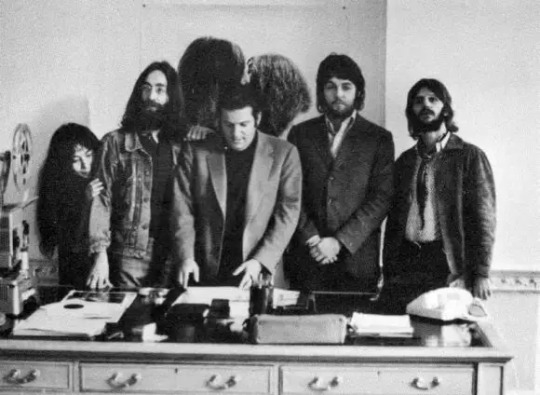
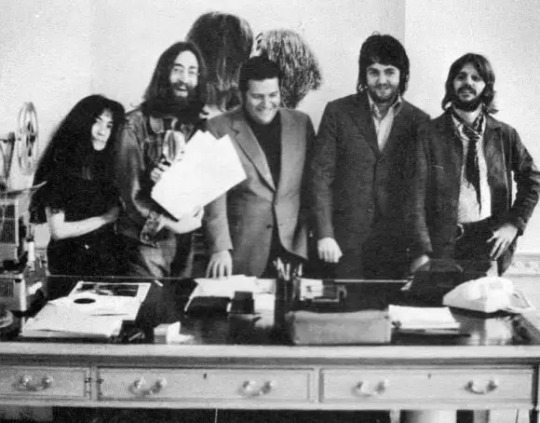

John Eastman pushed for Paul to have the same number of votes as the other three combined, which baffled everyone - including Paul. However, it all turned out to be for nought when Consortium threw in their stake with ATV. Northern Songs was lost. The next day, the group reconvened to sign The Beatles' new contract with Capitol****** and John Lennon left The Beatles.
* Clive or someone had renamed NEMS Nemperor Holdings at this point, but I’m going to keep using NEMS because this is tedious enough without companies changing names.
** Insider trading is buying or selling a company's stock in accordance with information that is not publically available. For example:
My friends and I are betting on how many hot dogs my cousin David can eat within twenty minutes. Everyone else has to place bets based on guesses, but I know from growing up with him that Dave gets sick after eating seven hot dogs at once, and I bet accordingly.
*** Why didn't John know this? Aside from because he was paranoid, already suspicious of Paul and the Eastmans, and probably on a ridiculous cocktail of drugs, I think he might genuinely not have remembered. It's possible that his accountant called him at some point, said hey, do you want to put some shares aside for your family? And he just said yeah, went straight back to sleep, and it had slipped entirely from his mind by the time he woke up.
**** Per Klein, in the middle of negotiations John Eastman sent a message to Capitol saying that Klein does not represent Paul in any way, which was not true.
***** ABKCO was singlehandedly controlled by Allen Klein
****** A very lucrative deal. It gave them 25% of the wholesale price, a higher royalty rate than any other recording group.
#please feel free to add/correct me!#my dad saw me drawing those pie charts and asked if i was doing horoscopes. said yes cause it's easier to explain#midposts#on lawyers and managers
19 notes
·
View notes
Text
...his health seemed rather fragile; when we went to dinner he ate very little. Playing with his food, he reminded me of the young boy I used to serve at the Adelphi all those years ago. [...] Despite the joy at being with my old friend, my sorrow was never very far from the surface that evening.
Brian came clean before we entered the theatre. He told me that, notwithstanding everything that had happened over the past four years, he still felt like a novice; that he was worried about a deal with 'the Australian' as he put it, namely Robert Stigwood; that he was beginning protracted negotiations with EMI that he felt would surely wear him out (this, I believe was the revamped Beatles recording deal); that he felt superfluous now that the Beatles had come off the road. All of this was probably true but, in all honesty, I didn't altogether believe him.
I felt that Brian was hopelessly addicted not only to a kind of masochistic self-effacement, but also to a chemical something or other. He was rather exquisite that evening, but also morbid, nervous and rather depressed. I knew that, unlike myself, he had decided to embrace this new era of 'self-fulfilment' and an interminable game of catch up with culture's own pleasure principle. But it wasn't working.
After the gig, Brian walked me to my hotel. We embraced. "Joe, I'm so lonely," he said and then turned and walked away.
That was the very last time we spoke.
Standing in the Wings, by Joe Flannery (with Mike Brocken)
(November 1966)
27 notes
·
View notes
Text
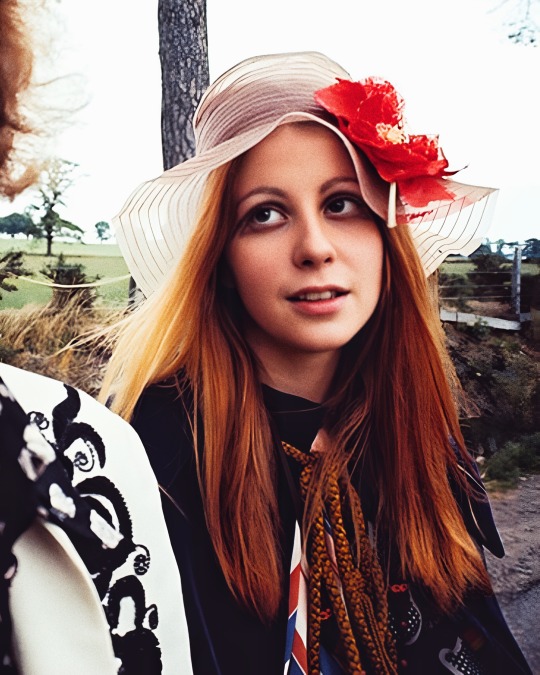

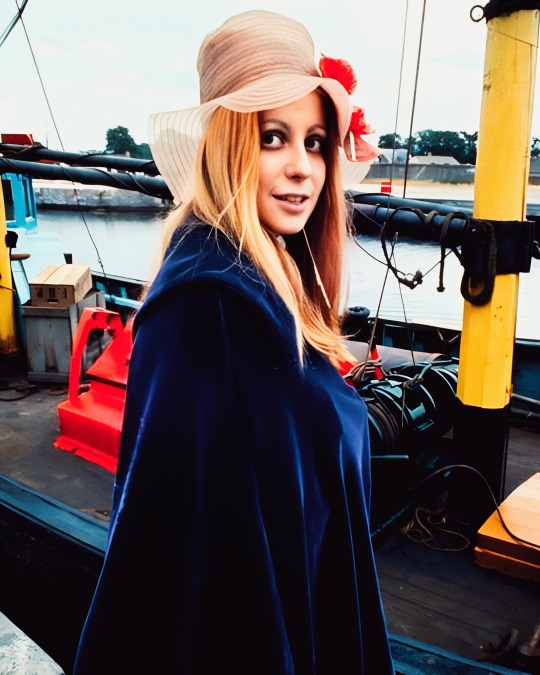
Charlotte Martin by Robert Whitaker during the photoshoot for the cover of Disraeli Gears.(1967).🌸”.•⚡️
In Eric's autobiography, he writes: At the Speakeasy Club, I had first met one of the great loves of my life, a very beautiful French model, Charlotte Martin. I was smitten with her from the very first moment I set eyes on her. She was very beautiful in an austere way, classically French, with long legs and an incredible figure, but it was her eyes that got on me. They were slightly Asian with a downward slant, and a little bit sad. We started dating right away and soon moved in together into a flat in Regents Park belonging to Stigwood's partner, David Shaw, who was the financial brains behind the organization. Charlotte was an incredible girl, more interested in films, art and literature than in modeling, and we had a great time together.
#eric clapton#charlotte martin#60s icons#the cream#groupie#1960s#60s#sixties#rock and roll#groovy#psychadelic#quote
51 notes
·
View notes
Text
Thanks to people gifting me a ton of photos, click the link above to access a pictorial spread of the original Los Angeles cast of Jesus Christ Superstar in the summer of 1972, at the (sadly late) Universal Amphitheater on the Universal Studios backlot in California. To be clear: this is a little album of every picture we've ever been able to scrounge up from the two weeks that Ted Neeley and Carl Anderson were in the L.A. cast before they ran off to Israel to make a certain film.
If nothing else, it just goes to show that when you let Tom O'Horgan cook, to use current terminology, he comes up with something less gonzo and more down-to-earth than an avant-garde treatise on futuristic insects play-acting a version of an earlier primitive civilization's myth. (Yeah, that's what the OBC's wild designs were about. I'll explain more someday.)
For more background and context to the pics, hit the jump!
Background on the Location
Let's start with the venue: we find ourselves at a 3,800-ish-seat open-air Amphitheater on the Universal Studios backlot, built as a daytime arena where Studio Tour patrons could watch a western-themed stunt show and shootout. As the story goes, someone, likely a young person who'd been to concerts in unusual places, wondered aloud whether they could use it as an event space at night. As a test, they ran some old movies (Marx Brothers and so forth), passed out free popcorn and peanuts, and discovered that even without the tour, people would come, park their carcasses, and watch a show. Prime opportunity to make money -- now they just needed an event that would pull crowds.
Picking JCS was sort of an in-house deal. The parent company of Universal was MCA, which then owned a stake in the show along with the Robert Stigwood Organisation. A fully staged version had yet to play the Coast, though successful concert tours had cleaned up at the Hollywood Bowl and across the country. So they booked a month-long run and hoped for the best. Thanks to casting hi-jinks in the Broadway production (again, fodder for another post), Ted Neeley was set to play the leading role of Jesus, and Carl Anderson would co-star as Judas.
Background on the Staging and Design
My guess: O'Horgan knew by now that ALW and TR had toed the party line, but were generally not interested in what he did back in the Big Apple, so a square-one rethink was the order of the day. Moreover, the glitterati of Hollywood was likely to fill these seats at some point. He couldn't do some avant-garde-a-clue (as George Harrison would put it) theater crap in Studio City. So he went with something simpler, more... basic -- the Bible writ large for a comic book generation and an arena audience. (Perhaps this was why Tom felt the focus had to be more on Jesus, moving intermission to follow "Gethsemane" instead of "Blood Money," a choice that, to his credit, was frequently echoed thereafter in UK productions.)
The scenery was arena-level simple: the set consisted of three stone outcroppings backed by an 80-foot-tall (!) cross draped in cloth. On closer examination, the two small stone groups near the sides of the stage were gigantic hands, palm up, with fingers reaching for the sky, and the large stone structure in the middle was Jesus' face. (Per audience reports, when Judas died, he stood in stone-Jesus' mouth, which flamed bright red, and descended into hell screaming, "You have murdered me!")
Herod was wheeled onto the stage in a contraption made out of nude alabaster mannequins, whose arms raised on cue to allow the white-suited Herod his entrance (perhaps the most '70s thing ever). Pilate, almost a Goth King straight out of Conan the Barbarian or Flash Gordon, reigned from a throne of human skulls that was frantically whipped around the stage while he laughed maniacally. For the crucifixion, Jesus and his disciples climbed the uncloaked cross, and as Jesus got into position, the disciples made a halo out of their open hands surrounding his head that glowed in the spotlights. As they played "John 19:41," the cross slowly moved back from the stage until it disappeared into the darkness by the end of the song.
There was still a lot of "go big or go home" about it, in true Tom fashion. As the artist's rendering of the crucifixion on the Playbill's title page or in the mail-order ticket ad (seriously, see link) attests, when Norman Jewison quoted classic art, it was a simple Da Vinci. Tom O'Horgan, on the other hand, went for a straight-up, balls-to-the-wall, extravagant take on Gustave Doré. (Compare that rendering to "Souls of Warriors of the Faith Form a Cross.")
All things considered, it was sort of a forerunner of "pandering JCS" like the A.D. and Farewell Tours, but it had balls compared to what ALW considers an arena tour-worthy production.
Reception
Maybe because it was set up to be a crowd-pleaser instead of playing with weirdness for a supposedly sophisticated audience on someone else's dime, the L.A. production was a massive hit with both critics and audiences compared to Broadway. During the day, it was the Wild West show; at night, it was JCS, frequently filling the venue to 98% capacity. It kept extending and ultimately ran twelve weeks rather than four (of which Ted and Carl, as previously mentioned, played two before shipping off to the Holy Land) until cold weather forced its closure that September.
(Recalled Ted in an interview circa 1993, when the A.D. Tour returned to the now-enclosed Amphitheater, "We used to freeze our buns off with those Santa Anas whipping around. Especially me when I was in that loincloth, hanging up on that huge cross." Not that the image didn't have a huge effect. To quote Amphitheater treasurer Maggie Magennis, who "saw it at least four or five times a week" when it opened, "The most exciting part was at the end. Teddy was up on the cross. We were open air then, and you could see the lights of the Valley. There was something really awesome about the fact that he represented something so spiritual, and yet the temporal aspect of the lights twinkling down below was there.")
My Two Cents
If I had an unlimited budget, I'd give it some twists of the '92 Oz tour and bring this exact thing back. That's what tours arenas and sells tickets, not "Occupy Jerusalem." Who knows? Maybe someday someone will be crazy enough to give me that kind of free rein...
#jesus christ super star#jesus christ superstar#jcs#jcss#jesus christ super-star#history#andrew lloyd webber#tim rice#ted neeley#carl anderson#tom o'horgan#universal studios
10 notes
·
View notes
Text
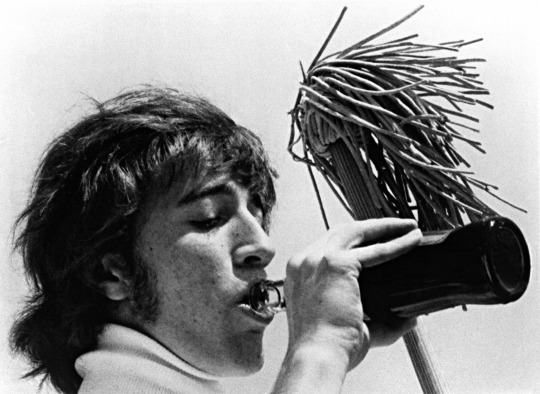
Robin Gibb during a photoshoot in 1972 on Robert Stigwood's 'super yacht'.
6 notes
·
View notes
